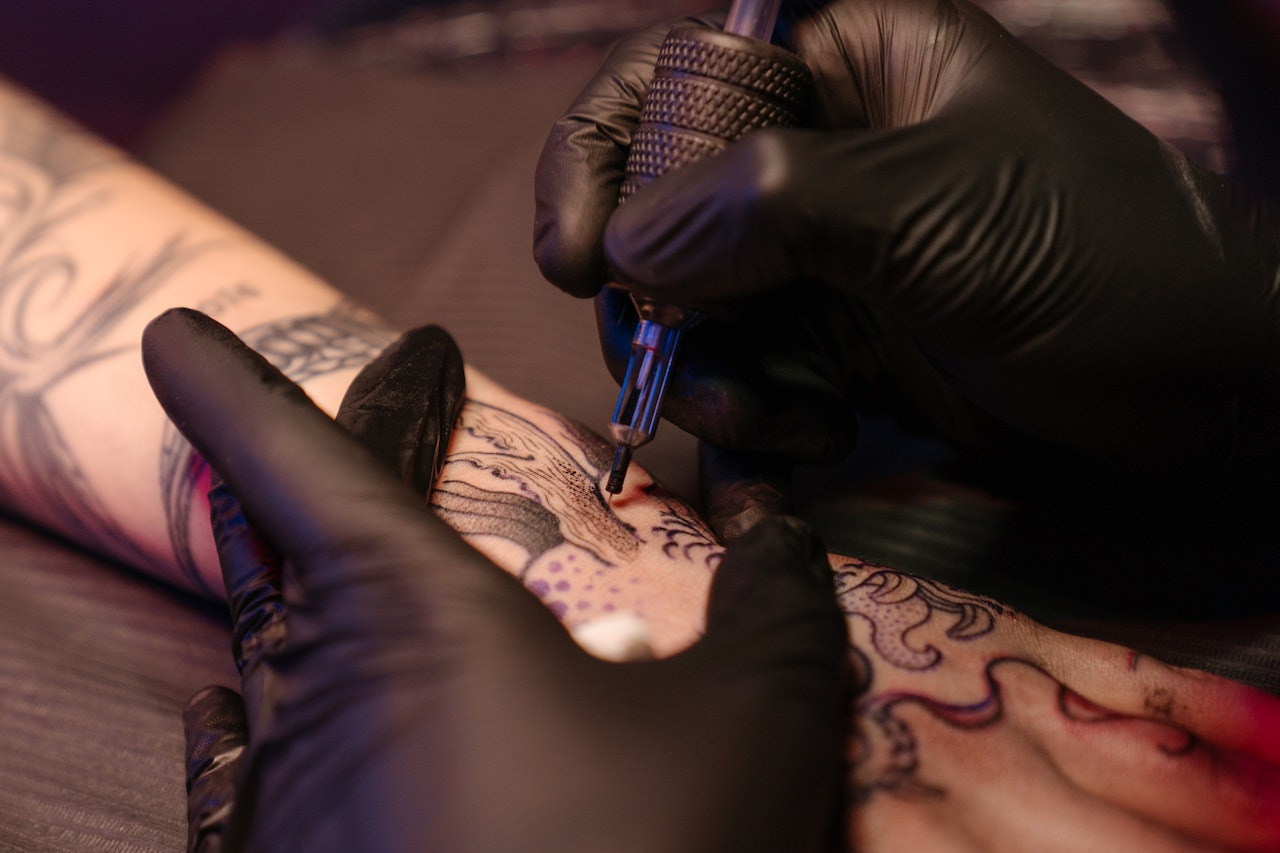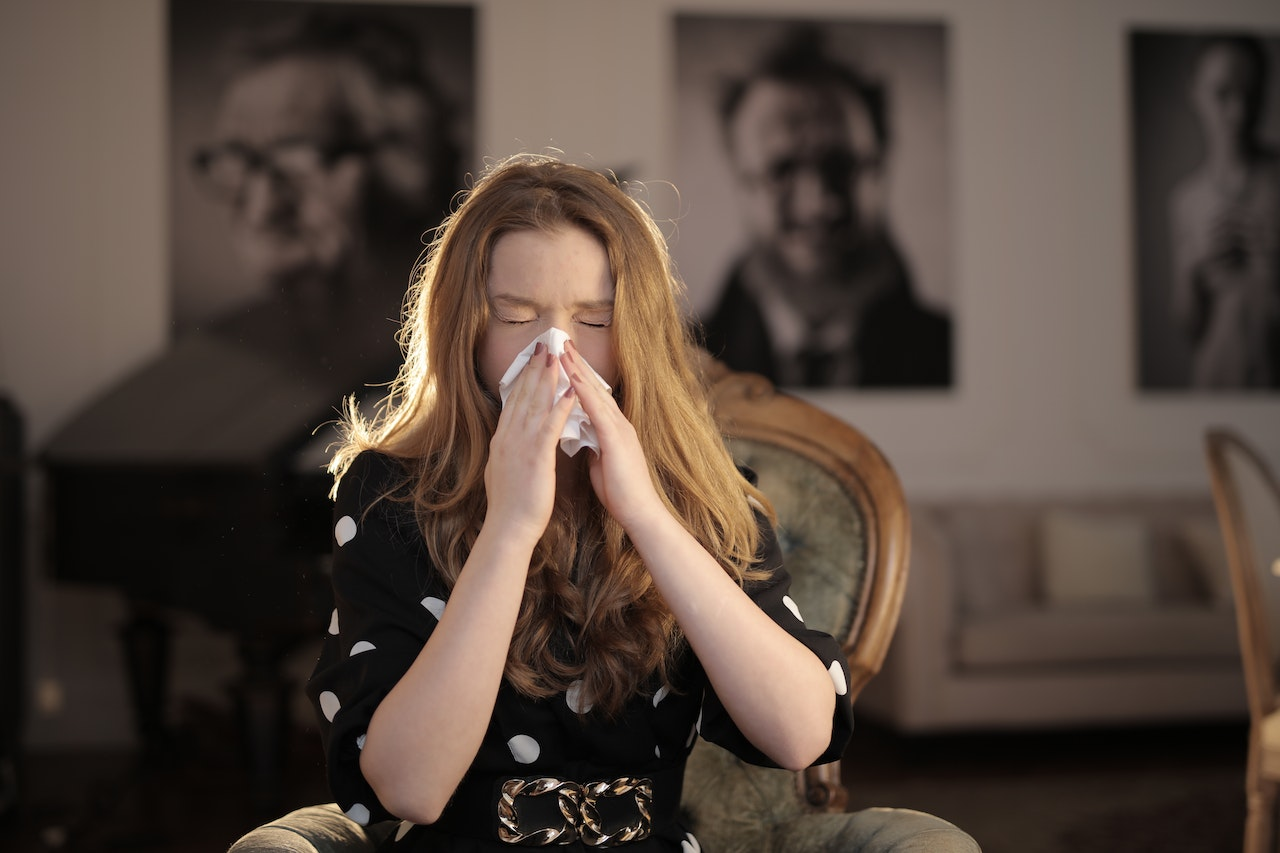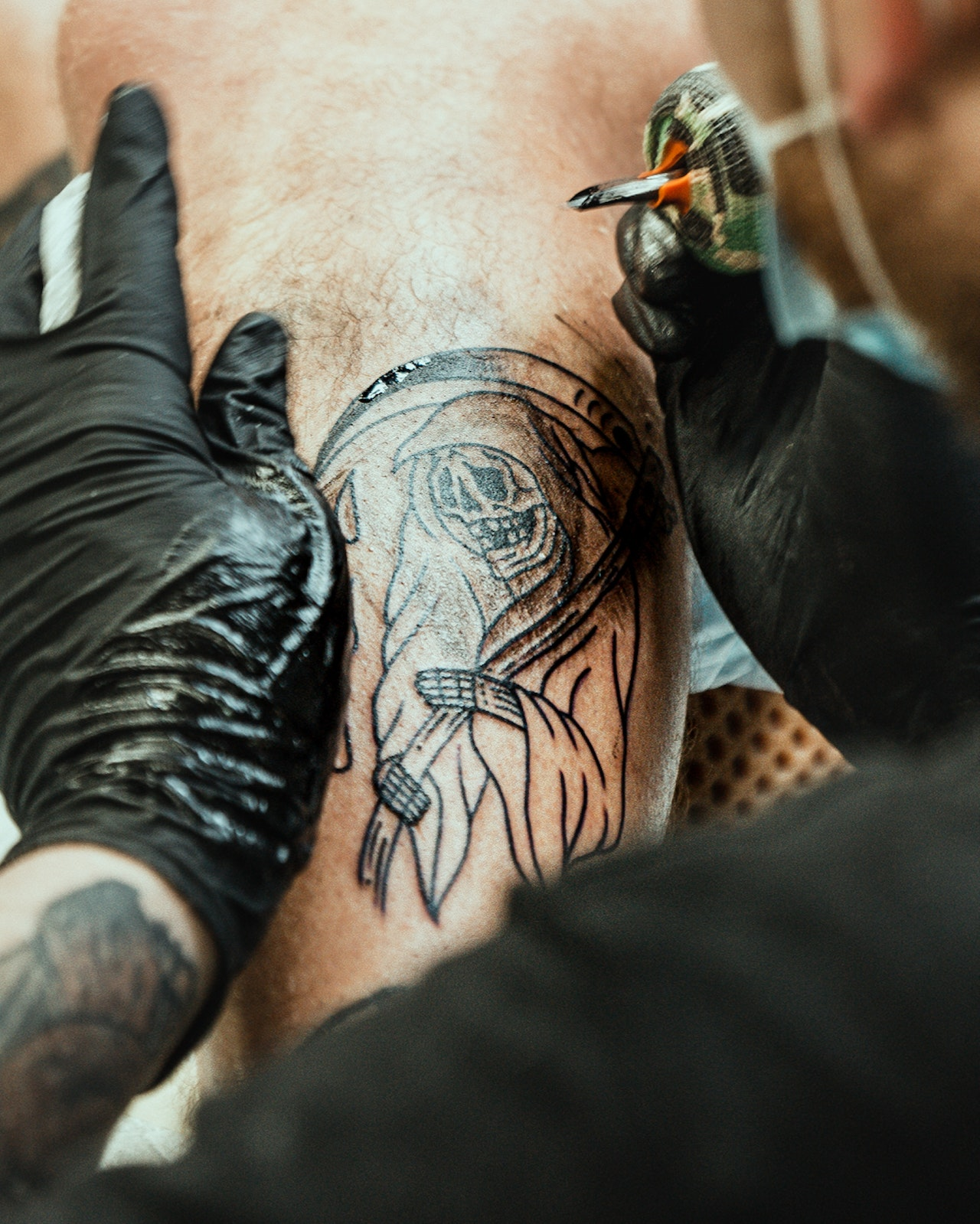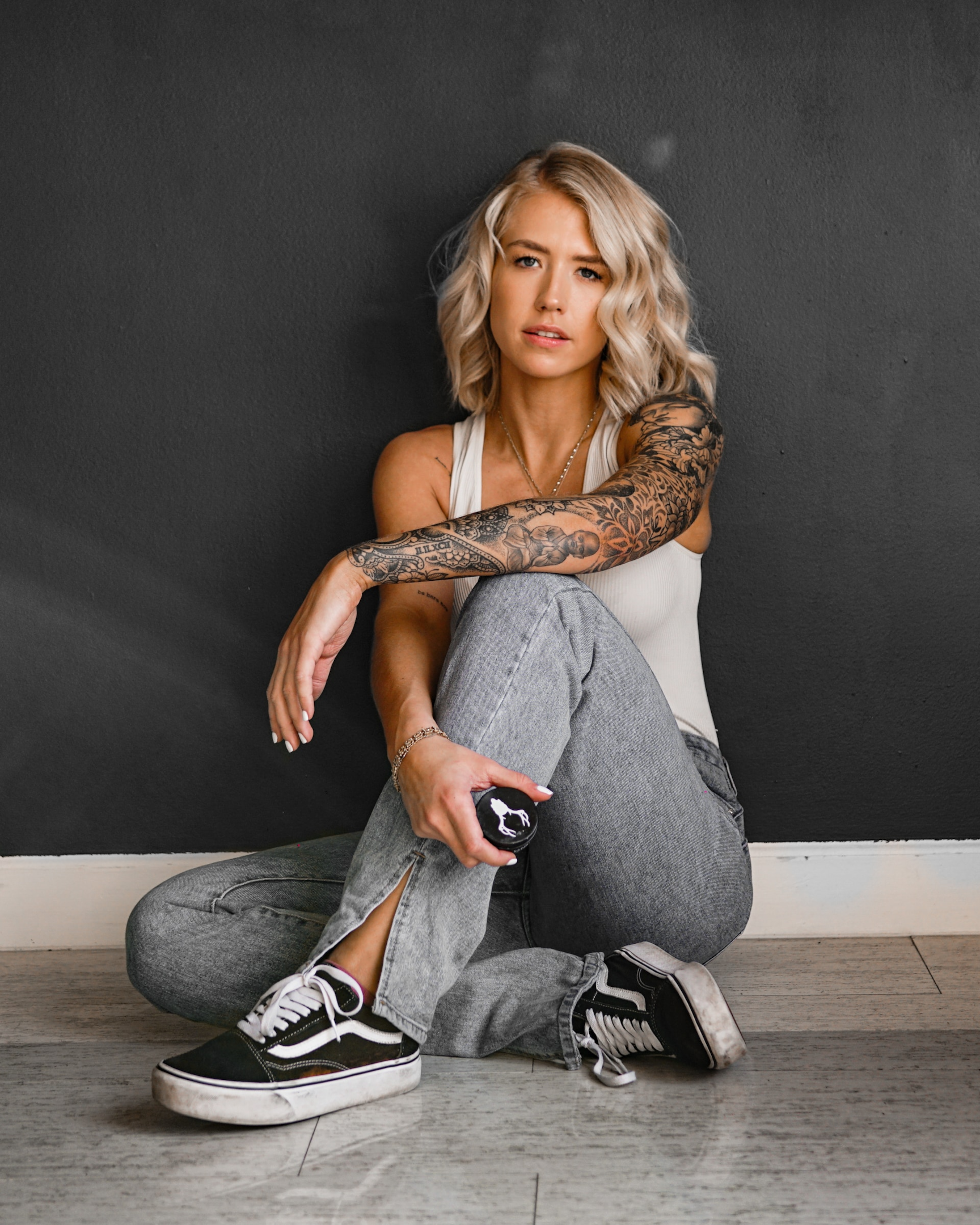Tattoos have been, like, forever and ever, a total way to express yourself and show off your amazing creativity and personality. But there are so many myths and misconceptions floating around, did you know? It’s essential to address these and set the record straight so that you can make informed decisions.

In the past few years, people who like tattoos and want to know more about them have noticed something new: the “tattoo flu.” The word “tattoo flu” might raise eyebrows and make people curious, but it’s not an illness. Instead, it’s slang for some people’s temporary pain after getting a new tattoo.
Even though it’s not a medical term and doesn’t refer to a real disease, the phrase comes from the pain that can come with a new tattoo as it heals. Are you curious to know about it? Let’s discover the real deal behind getting inked. We’ll find out what it is, why it happens, and most importantly, how you can handle the aftermath like a pro.
Tattoo Flu Origins
Getting a tattoo is an artful process involving needles injecting ink into the skin. While certainly causing discomfort, this detailed procedure triggers the body’s immune system to heal. As the body tries to fix the damage to the skin and get rid of any foreign substances, like tattoo ink, it can cause several symptoms that look like a weak flu or sickness.
To minimize the risk of experiencing tattoo flu, following proper aftercare as your tattoo artist advises is essential. This includes keeping the tattooed area clean and moisturized, avoiding submersion in water, and refraining from picking at the scabs. Good overall health with healthy meals and nutrition can also play a role in the body’s ability to recover from the tattooing process.
Whereas tattoo flu is expected in some individuals due to the immune system’s reaction to the tattooing process. Following the recommended aftercare and maintaining a healthy lifestyle can reduce the chances of experiencing these flu-like symptoms.

Symptoms of Tattoo Flu
Tattoo sickness symptoms can be similar to the ordinary flu, often suggesting that the body is healing after getting a tattoo. It is important to remember that not everyone who gets a tattoo will experience tattoo flu, and the severity of symptoms can vary from person to person.
The most common symptoms associated with tattoo flu include:
- Mild fever: A slight increase in body temperature may occur, indicating that the body is responding to the tattoo and working on wound healing.
- Chills: Along with feeling sick, some people may experience chills. This can result from the body’s attempt to regulate its temperature.
- Body aches: General discomfort and aches could be experienced due to the body’s immune system response to tattoo swelling.
- Dizziness: Feeling lightheaded or dizzy may also occur, especially if the tattoo session is long or the individual is particularly sensitive to pain.
- Fatigue: Tiredness and exhaustion are common after getting a tattoo, as the body directs its energy towards healing the rad new tattoo.
- Nausea and vomiting: Some people may experience an upset stomach or even vomiting, which can be a reaction to the pain or stress of a typical tattoo session.
- Stomach ache: Discomfort or pain in the abdomen could also be experienced, potentially related to nausea or possible tattoo infection.

If symptoms persist or worsen significantly, experience flu-like symptoms like feeling sick, redness, swelling, pus, increased pain, and fever. It is important to seek immediate medical attention.
When taking care of a new tattoo, it’s important to focus on both preventing illness and treating any possible “tattoo flu” symptoms that may show up.
Myth vs. Reality: Unraveling the Tattoo Flu
1# Myth: Tattoo Flu is Harmful: While the term “flu” can sound alarming, the discomfort associated with the tattoo flu is typically short-lived and not dangerous. It’s a temporary side effect of the body’s healing process.
Reality: Temporary and Manageable Discomfort: The symptoms of tattoo flu usually subside within a day or two after getting a tattoo. They are generally mild and manageable. It’s important to differentiate between normal healing discomfort and signs of infection, including excessive redness, swelling, pus, and severe pain.
2# Myth: Tattoo Flu is an Infectious Illness: Contrary to its name, the tattoo flu is not infectious. It’s a term that has been coined to describe the mild discomfort some people experience after getting a tattoo. This discomfort is not a result of an actual flu virus; instead, it’s a natural body response to the tattooing process.
Reality: It’s Your Body’s Natural Response: Getting a skin art involves inserting ink into the layers of your skin using a needle. This process causes a controlled trauma to the skin, triggering an immune system response. Like any other wound, your body sends immune cells to the area to facilitate healing. This immune response can lead to symptoms similar to a mild flu, such as fatigue, mild fever, and soreness.

Treatment and Prevention
There’s no need to stress about this whole “tattoo flu” thing ’cause it’s not a legit illness that needs treatment. Don’t worry; I got your back with some tips to handle the temporary discomfort and keep those healing risks at bay after getting inked.
You must stay on your A-game to ensure everything goes smoothly and slay that healing process. So, let’s dive right in and get those tips and tricks for a successful journey, shall we?
Let’s do this!
Treatment of Tattoo Healing Discomfort
The symptoms often associated with “tattoo flu” are usually mild and part of the natural healing process. Here’s how you can manage and ease the symptoms:
1. Rest and Hydration: Get a good night’s sleep so your immune system can work on getting better. Staying hydrated is also very important for your lovely new tattoo.
2. Over-the-Counter Pain Relievers: If you’re experiencing discomfort, you can take over-the-counter pain relievers like ibuprofen or acetaminophen as directed. These can help with soreness and reduce mild fever.
3. Avoid Strenuous Activities: Give your body time to heal by avoiding heavy weight-lifting exercises and activities that might strain the tattooed area.
4. Follow Aftercare Instructions: Your tattoo artist will provide specific aftercare instructions. These might include cleaning the tattoo gently, applying a recommended ointment, and avoiding exposing the tattoo to water or sun during the initial healing period. Following these guidelines is crucial for preventing tattoo infections and promoting proper healing.
Prevention of Complications
If you wanna rock that fresh ink without any hiccups, you gotta be all about preventing complications, okay? It’s like the ultimate secret to securing that successful tattoo outcome. You should know how to minimize those risks to ensure you’re on top of your tattoo game, so listen up!
1. Choose a Reputable Tattoo Artist: Research and select a skilled and reputable tattoo artist who works in a clean, sterile environment. A professional artist will use sanitized equipment and follow proper hygiene practices.
2. Allergy Testing: If you have had allergies or sensitivities in the past, you might want to get an allergy test before a tattoo appointment to see if you might be allergic to the tattoo ink.
3. Follow Aftercare Instructions: Adhere to the aftercare instructions provided by your tattoo artist. This helps prevent infection and ensures your tattoo heals properly.
4. Avoid Sun Exposure: Protect your tattoo from direct sunlight during healing. Sunburn can damage the delicate healing skin and affect the appearance of your actual tattoo.
5. Hygiene: Keep the tattoo clean and avoid exposing it to potential contamination sources, such as swimming pools or hot tubs, until your body heals completely.
6. Regular Checkups: Keep an eye on your tattoo’s healing progress. Consult a medical professional if you notice any infection or abnormal healing signs.
First things first, always trust your tattoo artist’s guidance. They’re the pros, after all! Next, take care of that masterpiece like it’s your baby. Moisturize, keep it clean and avoid any rough activities that could mess it up.
And hey, if you notice anything funky going on, don’t hesitate to hit up a doc. Your health is a top priority, always! So go out there, seek medical attention ASAP!

When to Seek Medical Attention
If you start noticing any of these signs, it is super important to get a doctor right away:
1. Signs of Infection: If you notice increasing redness, swelling, pain, warmth, or discharge with a foul odor, you might have an infection.
2. Severe Allergic Reactions: If you experience severe itching, rash, hives, or difficulty breathing, seek medical help immediately.
3. Persistent Discomfort: Consult a medical professional if your discomfort or symptoms persist beyond normal healing.
When it comes to body art, the journey never ends, even after you get inked! It’s all about the vibes, the self-expression, and the constant evolution. It’s all about knowing the ins and outs, the do’s and don’ts, and keeping those dangers at bay.
If you want your tattoo game to be strong, listen up! Ensure you’re vibing with your tattoo artist and following their post-op instructions, okay? And don’t forget to keep an eye out for any potential infection or allergic reaction because we want that healing process to be smooth as butter,
So let’s keep it real and take care of those tats because they’re gonna be fire!
Legal and Ethical Considerations
When discussing the “tattoo flu,” it’s important to remember the legal and moral issues of tattoos, patient liberty, and informed consent. Healthcare providers must find a way to treat their patients well while respecting their right to make choices about their health and bodies.
Patient Autonomy: As clinical ethics states, a patient’s autonomy is an important principle that gives people the right to choose their health care based on their values and preferences, even if that means getting a tattoo. Healthcare providers must accept their patients’ decisions, even if they may disagree with them.
Informed Consent: Before getting a tattoo, people must know about the risks, complications, and benefits. Tattoo artists and health care providers should ensure their clients know that tattoo flu is possible, its symptoms, and any suggested treatments or ways to avoid getting it.
Confidentiality: Maintaining confidentiality is critical in any healthcare situation. Professionals must keep all information about their patients, including whether or not they know if a patient has tattoo flu signs. Disclosure of such information will be permitted only with the patient’s agreement or in extraordinary situations determined by law.
Professional Responsibility: Tattoo artists and people who work in health care must follow safety and cleanliness rules. This means using sterilized tools, keeping the area clean to reduce the risk of infection, and advising people to take care of their tattoos so they don’t get tattoo flu.
When we talk about patient autonomy, informed consent, confidentiality, and professional responsibility, we’re all about building that trust and creating a safe space for our clients, artists, and healthcare providers. It’s all about respecting boundaries, keeping it real, and being responsible.

Final Thoughts
By busting the myths about the “tattoo flu,” we discovered that these symptoms are just a quick part of the healing process. Don’t panic; It’s all about being aware of the contrast between routine healing and potential hiccups, like getting sick or having tattoo flu symptoms after a tattoo session. With this awareness, you can take control of your new tattoo healing journey like a boss!
We must remain realistic and discuss the risks involved. We’ve talked about diseases and allergic reactions that could happen, as well as how to take care of the fresh ink afterward. All you need to do is stay aware and care for your body.
The most important thing is to keep it clean. Make sure to clean and disinfect it. Next, when it comes to tattoo artists, you should always choose the best of the best. Please don’t settle for less; when your tattoo is new, follow the aftercare instructions like your life depends on it.
Believe me, it will be worth it!
It’s not just about getting inked; it’s about expressing ourselves and unleashing our creativity through body art! Let’s spread the love for tattoos and show the world how awesome they can be!
Tattooing is all about telling and sharing our unique stories with the world!

